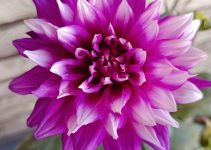Garlic Wine Creeper / लहसुनिया बेल
Garlic Wine / लहसुनिया बेल
The Garlic Wine Creeper (Mansoa alliacea), also known as Garlic Vine, is a beautiful and fragrant tropical flowering vine native to Central and South America. It’s called “garlic vine” because its crushed leaves emit a garlic-like smell, though it’s not related to garlic and not typically used in cooking. It produces clusters of purple, lavender, or lilac trumpet-shaped flowers that change color as they age, creating a beautiful gradient effect.
Gardening tips to help your garlic wine creeper thrive:
Location & Light
- Sunlight: Prefers full sun to partial shade. Aim for at least 4–6 hours of direct sunlight per day for abundant flowering.
- Placement: Ideal for trellises, fences, arbors, or pergolas. It can also be grown in large containers with a support structure.
Soil
- Type: Well-draining, loamy soil is ideal.
- pH: Neutral to slightly acidic (around 6.0–7.0).
- Note: Add compost or organic matter to enrich the soil and improve drainage.
Watering
- Frequency: Water regularly, especially in hot/dry conditions. Keep the soil moist but not soggy.
- Note: Reduce watering slightly during the cooler months.
Flowering
- Blooms: Typically flowers twice a year — in spring and again in late summer/fall.
- Flowers start deep purple, fade to lavender, and end up pale lilac or white, often showing multiple shades at once.
Pruning
- When: After flowering or in early spring.
- How: Light pruning encourages bushier growth. Remove dead or weak stems to promote airflow.
- Note: Don’t over-prune or you may reduce flowering.
Temperature & Climate
- Best suited for tropical and subtropical climates (USDA zones 9–11).
- Protect from frost — it may die back in cold weather but can regrow in spring in mild climates.
Fertilizing
- Use a balanced fertilizer (e.g., 10-10-10) once a month during the growing season.
- Avoid excessive nitrogen — it promotes foliage over flowers.
Pests & Diseases
- Generally, pest-resistant, but keep an eye out for:
- Aphids
- Mealybugs
- Fungal issues in overly wet conditions
- Treat with neem oil or insecticidal soap if needed.
Propagation
- Easily propagated by semi-hardwood cuttings.
- Take 6–8-inch cuttings with a few nodes.
- Dip in rooting hormone (optional), and plant in moist soil.
- Keep in a humid, warm area until roots develop.

